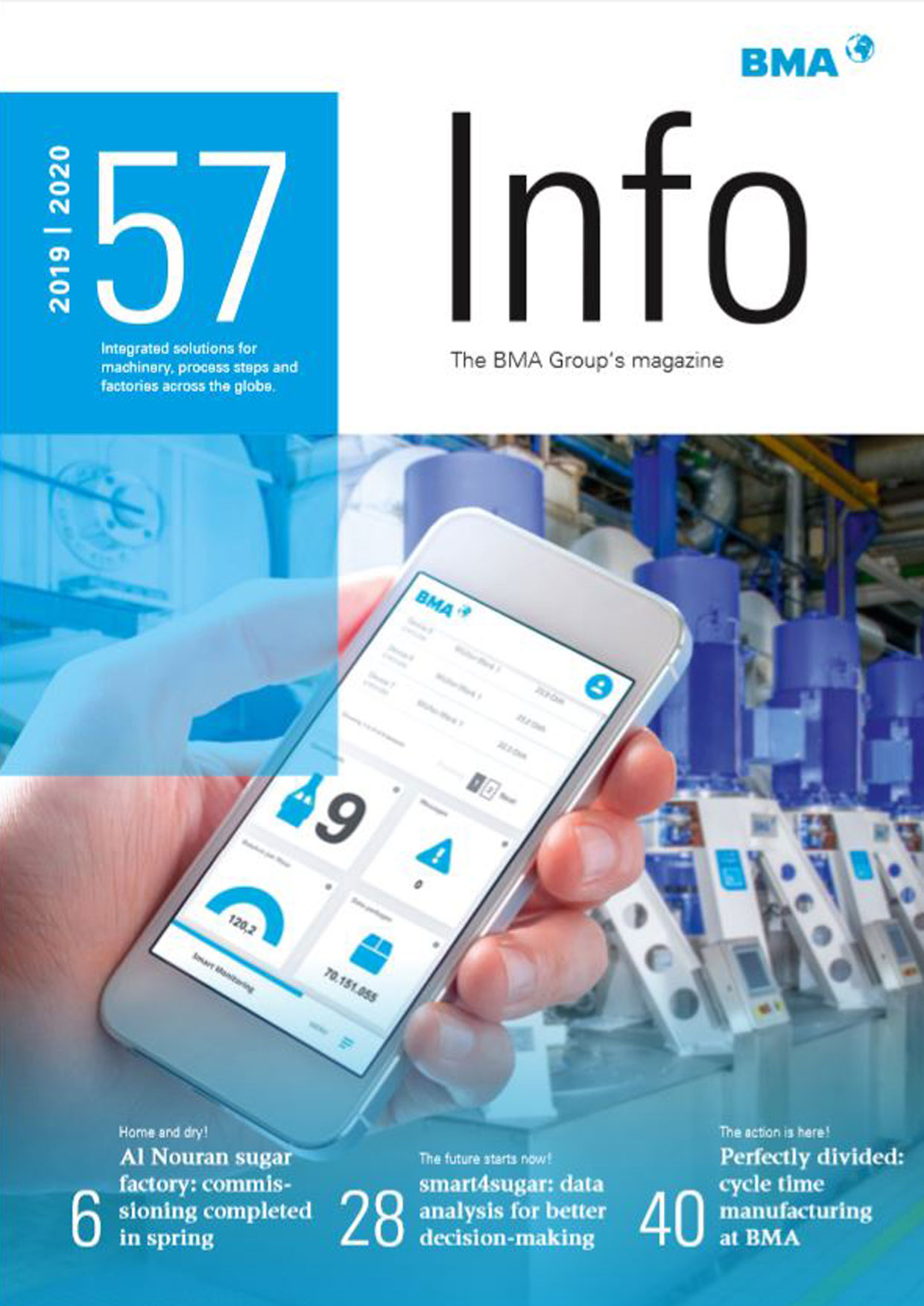Bundaberg in the Australian state of Queensland is home to BMA’s first falling-film evaporator (FFE) on the continent: the first effect of an evaporator station in a cane sugar factory with 6,000 t/d capacity. The plant has a heating surface of 4,000 m2, a 3.8/4.1 m diameter, and it stands 24.2 m tall. ISCAL Sugar from Belgium, a subsidiary of the Finasucre Group like Bundaberg Walkers, Australia, bought the FFE together with an extraction tower from BMA.
A first in down under
BMA falling-film evaporator in Australia
The end customer, Bundaberg Bingera Mill, is technically supported by Bundaberg Walkers, whose portfolio includes cane sugar mill construction and extensive engineering for the cane sugar sector. It was therefore clear from the start that all local engineering-related work would be the responsibility of Bundaberg Walkers – in close collaboration with our team in Germany and with ISCAL Sugar, the head office in Belgium.
New technology has many benefits
The photos show the new FFE outside the main building near the existing evaporator station, which originally had five effects. Given its age and the high annual repair and maintenance costs, it was not possible to continue using all apparatus in this station, and an upgrade became necessary. The logical conclusion was to rely on the new FFE, using it as the first effect, with each of the remaining four effects being set back by one effect. Especially because our customer is hoping to enjoy all the benefits of an FFE from BMA: low steam consumption, reduced formation of colour, and far smaller sugar losses.
Commissioning in summer 2018 went smoothly. The FFE quickly achieved a heat transfer coefficient of more than 2,226 W/m²K and evaporation rates of more than 100 t/hr. The temperature difference between the heating steam and vapour was less than 7.7 K.
The FFE has been our technology of choice for evaporator stations for many years. It offers higher heat transfer coefficients, even at low temperatures, and permits a smaller loss of pressure. Our specially developed juice distributor plays a key role in keeping retention times of the juice in the FFE short. And it ensures the juice is evenly distributed across all heating tubes.
Good for the environment and your budget: less cleaning required
Another major aspect is the cleaning of the FFE, which we are frequently asked about. The FFE from BMA needs to be cleaned, too – but at much longer intervals and requiring far less effort and fewer chemicals. This effect was noticeable immediately after commissioning, so the new FEE is cleaned every fortnight now rather than every week.
Together with the Australian Sugar Research Institute (SRI), Bundaberg Bingera Mill will be carrying out a large-scale study on the formation of scale and cleaning efforts during the 2019/20 campaign. We’re all interested to read the results!
Reduced steam consumption and sugar losses
Only a few days after commissioning, a marked reduction in steam consumtion was also noticeable – of up to 6 %, in fact, with constant output. This is often a key factor in the planning of an efficient factory, which aims to produce as much surplus power as possible for export; it is not an issue for Bundaberg Bingera Mill in Queensland.
In Australia, the focus is instead on reducing sugar losses through use of an FFE. Published SRI studies have shown that noticeable improvements are, in fact, possible. BMA’s first FFE in Australia may be providing some evidence for that soon.





